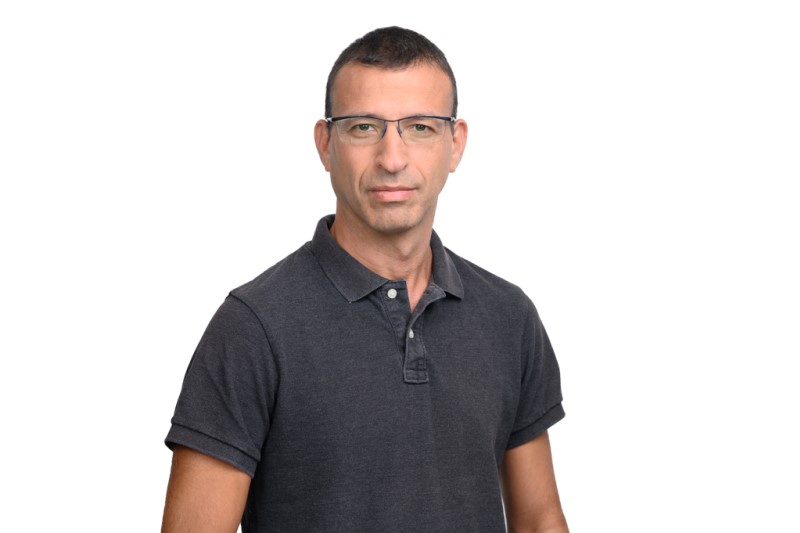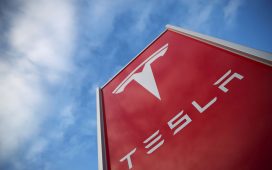
© Arbe PR
Arbe Robotics, a leading developer of high-resolution radar systems for autonomous driving, reported its financial results for the fourth quarter and full-year 2023. Despite the challenges, including some OEMs delaying their decision timelines, the company expects significant customer wins in 2024.
Arbe announced the production version of its Radar Processor and the availability of its production intent chips, with a Chinese Tier-1, HiRain, set to begin mass production of 4D imaging radars using Arbe’s chipset. The company’s revenue for Q4 2023 was $0.35 million, and it ended the year with a $44 million cash reserve. Arbe is also preparing for a dual listing on the Tel Aviv Stock Exchange and plans to issue bonds for additional working capital.
Key Takeaways
- Arbe Robotics’ Q4 2023 revenue increased to $0.35 million from $0.15 million in Q4 2022.
- Full-year revenue for 2023 was $1.5 million, down from $3.5 million in 2022.
- The company announced its Radar Processor production version and the availability of production intent chips.
- HiRain plans to start mass production of 4D imaging radars using Arbe’s chipset, with plans for extensive data collection.
- Five leading OEMs have selected Arbe’s chipset for perception projects, and the company is targeting non-automotive markets as well.
- The company expects to achieve four design-ins with automakers and projects revenue growth in 2025.
- Arbe has a strong cash position with $44 million in cash and equivalents, and no debt.
Company Outlook
- Significant customer wins anticipated in 2024.
- Four design-ins with automakers expected in 2024, projecting revenue growth in 2025.
- Dual listing on the Tel Aviv Stock Exchange and bond issuance planned for working capital.
Bearish Highlights
- Full-year revenue for 2023 declined compared to 2022.
- Negative gross margin reported for Q4 2023 and the full year.
- Adjusted EBITDA for 2024 projected to be a loss in the range of $30 million to $36 million.
Bullish Highlights
- High demand for Arbe’s high-channel count Imaging Radar.
- Non-automotive strategy gaining traction, expecting major revenues in 2024 and 2025.
- Improved competitive landscape with no new competitors and increased OEM understanding of the importance of high channel count radar.
Misses
- The slower ramp-up in 2024 not significantly impacting the revenue projections mainly built from China and non-automotive applications.
- Awaiting final OEM approval before recognizing revenue from orders.
Q&A Highlights
- Arbe’s radar, along with Mobileye’s chipset-based radar, are the only known solutions for Level 2+ and Level 3 autonomous driving systems.
- The company discussed the limitations of software radars in meeting the requirements of advanced autonomous driving systems.
- Arbe expressed gratitude to employees and partners and invited investors to contact them for further discussions.
Arbe Robotics (ticker not provided) continues to position itself as a key player in the autonomous driving industry, with its Imaging Radar technology attracting interest from OEMs and non-automotive sectors alike. Despite a decrease in year-over-year revenue, the company’s strategic moves and anticipated design wins suggest a potential turnaround in the coming years. The company’s financial stability, marked by a strong cash reserve and no debt, supports its ongoing projects and market expansion plans. As Arbe prepares for a dual listing and bond issuance, investors and industry watchers will be closely monitoring its progress and the adoption of its radar technology in both automotive and non-automotive applications.
InvestingPro Insights
Arbe Robotics’ recent financial results and strategic moves have drawn attention to its market position and future potential. To further understand the company’s financial health and market sentiment, let’s consider some key metrics and insights from InvestingPro.
InvestingPro Data shows a Market Cap of approximately $120.91 million, reflecting the company’s current valuation in the market. Despite a challenging year, with a Revenue for the last twelve months as of Q3 2023 at $1.27 million, the company’s financial stability is evidenced by its strong cash position, as it holds more cash than debt on its balance sheet. This is particularly important for investors considering the company’s plans for a dual listing and bond issuance, as it suggests a degree of financial flexibility.
An InvestingPro Tip worth noting is that analysts anticipate sales growth in the current year, which aligns with Arbe’s own projections of significant customer wins and revenue growth in 2024 and beyond. This forward-looking perspective may be of interest to investors who are focused on the company’s growth trajectory.
Another InvestingPro Tip is that Arbe’s stock price has experienced significant volatility, having taken a big hit over the last week and month. This volatility is crucial for investors to consider, especially given that the stock price often moves in the opposite direction of the market. This could indicate a higher risk profile but also the potential for high rewards if the company’s strategic initiatives pay off.
For those interested in diving deeper into the financial analysis and obtaining more InvestingPro Tips for Arbe Robotics, a visit to https://www.investing.com/pro/ARBE is recommended. Investors can use the coupon code PRONEWS24 to get an additional 10% off a yearly or biyearly Pro and Pro+ subscription. There are 14 additional InvestingPro Tips available that could provide further insights into Arbe’s financial health and market potential.
Full transcript – Industrial Tech Acquisitions (ARBE) Q4 2023:
Operator: Hello, and welcome to the Arbe Robotics’ Fourth Quarter and Full-Year 2023 Earnings Results Conference Call and Webcast. All participants will be in listen-only mode. [Operator Instructions] After today’s presentation, there will be an opportunity to ask questions. [Operator Instructions] I would now like to hand the call over to Miri Segal of MS-IR. Please go ahead.
Miri Segal: Thank you, everyone, for joining us today. Welcome to Arbe’s fourth quarter and full-year 2023 financial results conference call. Before we begin, I would like to remind our listeners that certain information provided on this call may contain forward-looking statements, and the Safe Harbor Statement outlined in today’s earnings release also pertains to this call. If you have not received a copy of the release, please view it in the Investor Relations section of the company’s website. Today, we are joined by Kobi Marenko, Arbe’s Co-Founder and CEO, who will begin the call with a business update. Then we will turn the call over to Karine Pinto-Flomenboim, CFO, who will review the financials. Finally, we will open up the call for the question-and-answer session. With that, I’d like to turn it over to, Kobi Marenko. Kobi, please go ahead.
Kobi Marenko: Good morning, everyone, and thank you for joining us. I will begin by reviewing some of our recent business highlights, then Karine Pinto-Flomenboim, Arbe’s CFO will review the financial in more detail and share our outlook. Finally we’ll open the call for the question-and-answer session. Throughout the year, we focused on driving a radar revolution with our industry leading solutions. We are pleased with the progress we have made as we continued to innovate and develop our offerings in 2023. Although some OEMs push their decision timelines into later this year, the anticipation surrounding our offerings is high and we expect to announce significant customer wins in 2024. Industry timelines have been extended as the auto industry realigned its autonomous driving ambition with a focus on enabling meaningful Level 2+ and Level 3 applications to differentiate their offering and meet customers’ needs. As a result, OEMs have redirected their engineering resources and adjusted product roadmap. The dream of safe hands-free driving is within reach. According to Evercore analysts, in 2028, around 30% of all new vehicles will offer hands-free driving. The industry is currently selecting the next generation sensor solution to fuel this revolution. We see that the core sensor needed to solve the problem is a high-channel count Imaging Radar like Arbe’s. This demand is well reflected in all RFPs we encounter in the market. One of the most exciting developments of Q4 was our announcement of the production version of our Radar Processor. It supports the processing of a reach point-cloud that is 10 times more detailed than any other radar on the market, offering the first radar-based solution that is detailed enough to support OEM’s ambition to launch Level 3 and higher autonomy applications. Our sophisticated perception radar supports the needs of hands-free driving at an affordable price providing unmatched safety that we believe can scale the industry to full autonomy. Also on the product front, we recently announced the availability of our production intent chips, which include the transmitter, receiver and processor for the manufacturing of perception radars. This is an important step leading to the production and the revenue phase. Now, our chipset is in the automotive qualification phase which is the final step before mass production this year. The production intent chips is already in use by Arbe’s Tier-1 in their V Sample system and has been delivered to OEMs for data collection and algorithm development. In January, we were proud to announce an important milestone. HiRain, one of our long-time Chinese Tier-1s, announced that it will begin the mass production of state-of-the-art 4D imaging radars powered by Arbe’s chipset by the end of this year. In addition, HiRain announced it will start a data collection phase using a vehicle fleet equipped with Arbe powered imaging radars with plans to cover 1 million kilometers. The goal of the data collection project is to optimize the Fusion and Perception systems to enable key safety and comfort features. On top of HiRain, five other leading OEMs selected Arbe’s chipset for perception projects. Additionally, Arbe received a second order for evaluation system from a leading Western truck company. This level of commitment from Tier-1s and OEMs marks an important final step before moving into the commercial phase. Shifting gears as part of our growth strategy, we are also targeting the non-automotive market, which is moving faster than the traditional auto market. One of our Tier-1, Sensrad, recently announced that it has significant customer order for its Hugin Imaging Radar, which is based on our chipset. These orders include an American autonomous transportation global manufacturer, a robotized professional outdoor power equipment manufacturer, as well as a key player in the transportation sector. We view this achievement as a strong validation of our technology. Collaborating with Sensrad in the non-automotive market increases our total addressable market and accelerates our time to market. Finally, we are initiating a dual listing on the Tel Aviv Stock Exchange to enhance our trading volume. At the same time, we plan to issue bonds to the public to secure working capital to support the predicted production ramp-ups in 2025. This proactive and strategic approach underscores our commitment to optimizing investor value and fortifying our financial position in a dynamic market landscape. In summary, we are encouraged by our progress during the past year as well as the progress of our Tier-1. Despite selection process and OEM program delays that are out of our control, we see that customers are excited about our solutions and the possibilities we can achieve together. We believe that Arbe remains strongly positioned as the long leading radar supplier in those OEMs and we expect to announce full customers wins in 2024. Additionally, our approach in targeting new areas around the non-automotive industry is providing to be successful and we see faster go-to-market opportunities in these markets. Arbe continues to innovate and we believe we can lead the safe hands-free revolution. Now, I would like to turn the call over to our CFO, Karine, to go over the financials.
Karine Pinto-Flomenboim: Thank you, Kobi, and hello, everyone. Let me review our financial results for the fourth quarter and the full-year 2023 in more detail. Total revenue in the fourth quarter was $0.35 million compared to $0.15 million in the fourth quarter of 2022. For the full-year of 2023, total revenue was $1.5 million compared to $3.5 million in 2022. Backlog as of December 31, 2023 is $1 million and is expected to be recognized as revenue during 2024. Negative gross margin for Q4 2023 was 54.5% compared to a negative gross margin of 45.6% in Q4 2022. Gross margin for the full-year of 2023 decreased to negative 2.6% compared to a positive 63.5% in 2022. The margin decrease was primarily related to low annual revenue as we shifted our focus onto chips for production. Moving on to expenses. In Q4 2023, we reported total operating expenses of $11.9 million compared to $14 million in Q4 2022. The decrease in Q4 2023 was primarily driven by a reduction in research and development expenses, favorable exchange rate offset with an increase in share-based compensation. Operating expenses for the full-year totaled to $46.8 million compared to $50 million in 2022. The decreased reflected advanced production stage and the finalization of costs related to this production maturity stage. And to a lesser extent, favorable exchange rate and the reduction in D&O insurance rates, partially offset by an increase in share-based compensation. Operating loss for the fourth quarter of 2023 was $12.1 million compared to $14.1 million in the fourth quarter of 2022. Operating loss for the full-year of 2023 was $46.9 million improvement of $0.8 million compared to 2022. Looking at adjusted EBITDA in Q4 of 2023, a non-GAAP measurement which excludes expenses for non-cash share-based compensation and for non-recurring items was a loss of $8.2 million compared to a loss of $11.5 million in the fourth quarter of 2022. Adjusted EBITDA for the full-year of 2023 amounted to a loss of $32.5 million a $5.5 million improvement from 2022 and within our projected guidance. Net loss in the fourth quarter of 2023 decreased to $9.3 million compared to a net loss of $11.1 million in the fourth quarter of 2022. Net loss for the full-year of 2023 was $43.5 million compared to $40.5 million in 2022. 2023 net loss included financial income of $3.4 million resulted mainly from deposit interest and foreign exchange revaluations. Moving to our balance sheet. As of December 31, 2023, Arbe had $44 million in cash, cash equivalents and short-term bank deposits with no debt. With respect to our 2024 guidance our goal of achieving four design-ins with automakers remain unchanged, as we observe continued strong interest in our market leading offering. We have strengthened our positioning in all our RFQ engagements, even though the OEMs have shifted their decision timelines from late 2023 to 2024. The 2024 annual revenue are expected to be in-line with those of 2023, followed by revenue growth in 2025. These revenue projections are based on the intention to be in full production in the second half of 2024 as well as our decision to exclusively focus on getting our chipset into production. We are committed to maintaining a strong and well-managed balance sheet, focusing on cost effectiveness and the ability to fund our revenue growth. Adjusted EBITDA for 2024 is projected to be in the range of $30 million loss to $36 million loss. Now, we will be happy to take your questions. Operator?
Operator: Thank you very much. We will now begin the question-and-answer session. [Operator Instructions] Today’s first question comes from Gary Mobley with Wells Fargo (NYSE:) Securities. Please go ahead.
Gary Mobley: Hi, everyone. Thanks for taking my question. I think last quarter you highlighted how perhaps as much as 20% of your workforce was called the military duty, hit the war. Maybe you can give us an update on where that stands today and how that’s affecting your R&D activity?
Kobi Marenko: Yes. So during Q4, we had around 20% of our team in military reserve. In January, most of them came back home and came back to work. And right now we have less than 5% of our employees on reserve duty. Definitely Q4, I would say was our less productive quarter ever, but people try to compensate in hard work when overall we were able to achieve all of our milestones with the customers and right now we are back to almost normal, at least to the new normal.
Gary Mobley: Okay. If I go back to the last earnings call, I believe you highlighted 11 major OEMs that were in final stages of selection and you expected about five or six cities to conclude with final decisions. It sounds like now you’re counting on four of those to go to final decision in calendar year ’24. So, maybe you can give us sort of an update there in terms of like the total pool of OEMs that are still in various stages of selection?
Kobi Marenko: The pool didn’t change. So, we spoke about 11 OEMs on Q4, actually it’s now 12, another RFP was opened with an OEM that last year did not stop this process yet. We haven’t lost any RFP since without participating in RFPs or since our Tier-1s began submitting proposals with our chipset. And the other way around, I think we are very, very close to major wins during the end of this quarter, early next quarter. As time goes by the decisions are in the final stages, and we hope to be able to announce major news before end of Q1, at least before we will report our Q1.
Gary Mobley: Okay. Last question for me, if I can. It sounds like more of the same with respect to China, that is China will be the first geography to really adopt and embrace L2+ autonomous driving. Maybe you can just speak to some of the impediments that you’re seeing in terms of direct customer or consumer adoption for L2+ autonomous driving outside of China?
Kobi Marenko: Yes. So, China I think right now looking on this market in two segments. There is the luxury car segment that of course would be launched first in 2025, but this is very, very narrow volume and most of those OEMs are focusing on launching radar together with LiDAR, sometimes even two LiDARs for L2+, plus L3. But the main segment, I would say is the mainstream in China and they’re trying to launch this kind of services only with radar. We spoke about HiRain fusion project. We can say that at least two major OEMs are doing this kind of projects as well. Fusion of radar imaging radar, our Imaging Radar with cameras in order to support Level 2+ plus Level 3 application without a LiDAR because on the mainstream of China the LiDAR price is too expensive even the Chinese LiDARs are too expensive and we believe that Imaging Radar will have a significant role in those launches.
Gary Mobley: Thanks, Kobi.
Operator: Thank you very much. The next question comes from Joshua Buchalter with TD Cowen. Please go ahead.
Unidentified Analyst: Hi, everyone, this is Lanny, on for Josh today. Just a few questions for me. To start, can you walk through some of the main drivers of slower adoption and push out? Is it slower for Arbe or the Imaging Radar space in general? And then are there any implications to the slower 2024 ramp on your expectations for ‘25 and ‘26 or are there separate decision, please?
Karine Pinto-Flomenboim: Can you repeat, you’re too close to the microphone, so can you repeat your question, please? Thank you.
Unidentified Analyst: Yes, sorry. Is this better? Can you hear me better now?
Kobi Marenko: Yes, now it’s much better.
Unidentified Analyst: Okay. Sorry about that. Just to start, it says, can you walk through the main drivers of slower adoption and push outs at the OEM level? We’ve seen this across other sense like LiDAR, but is it slower for Arbe or Imaging Radar in general, and then can you talk about the implications of a slower ‘24 ramp and ‘23 on your 2025 and 2026 expectations?
Kobi Marenko: Okay. So, I think that we are suffering from the same, from the main problem of the industry. So, the full stack of Level 2+ plus Level 3 also defines vehicles that can run this kind of software and do all of the updates and improve the ADAS systems over the year over time. This all stack is pushed because it’s too complicated than the OEMs basically sold at the beginning. But, what we see clearly is that majority of the OEMs putting a lot of R&D efforts on this area maybe more than before they are shifting out of their investments in EVs into those R&D projects. All of them want to control this stack and to compete on this stack and offer the customers a better and safer experience for highway autopilot and then for urban autopilot. So, we see that this push in the industry is across the board even it’s influencing the ramp-up of the central compute and other sensors. As of our revenues, our ‘25 revenues are built mainly from China which we believe that will ramp-up earlier and we know it will ramp-up earlier, and for non-automotive applications, so we don’t see a real influence on our ‘25 revenues. It’s mainly on the shift in ‘24. And also we believe that in ‘26 we will see major wins that we will have this quarter and next quarter will be in our revenues in ‘26. So, overall I think that the main shift is the main delay is in ‘24 revenues, which are shifted a bit to ‘25. We have enough cash to pass this hiccup and we believe that on the long run Arbe will be a leader player and a very strong company.
Unidentified Analyst: Great. Thank you for that color. I guess on that you previously mentioned a preliminary order for about $11.6 million from Weifu and 304,000 chipsets from HiRain I think were tens of millions of dollars. Are these expected to, like, when can we expect these to layer into the model and are they waiting final OEM decisions before revenue recognition?
Kobi Marenko: Yes, we are waiting for final OEM approval before recognition and also in chipset you need to deliver the chipset in order to be able to recognize it. We expect that we as HiRain stated by the end of this year, last quarter of 24 they will be in full production with our radar. So, which means that they will start, we will start shipping them chips and majority of the revenues from those preliminary orders we believe are going to be recognized in ‘25.
Unidentified Analyst: Great. Thank you. And that’s all for me.
Operator: Thank you. The next question comes from Suji Desilva with Roth MKM. Please go ahead.
Suji Desilva: Hi, Kobi. Hi, Karine. In the press release, you talk about a production intent chipset and there’s an auto-qual being conducted, is that being conducted by you or a Tier-1 or a potential customer?
Kobi Marenko: No, no. Basically as you know our fab is GlobalFoundries (NASDAQ:) and GlobalFoundries are doing for us also a full turnkey solution of taking the chips to production. So, the chips are in final stage of automotive qualification. They are running the automotive qual. In the pre-qual we saw that they are fine and we finished all of the preliminary tests and we are now running on the formal stage of last stage of automotive qualification and we hope to start shipping full qualified production chips by end of Q2. Of course in the beginning, in the first few, two, three months the volume will be low because it takes time for ramp-up in automotive, but in ‘25 we will be in full capacity and be able to supply any volume that is needed in the market.
Suji Desilva: Okay. All right. Thanks, Kobi. And then, one other question is on the competitive landscape, if you could update us on the traditional radar competitors and maybe some of the more software centric models and what you’re seeing in various geographies and OEMs in terms of the competition?
Kobi Marenko: We are not seeing those kinds of companies in the competition. The other way around, what we see more and more is OEMs that are stating that in the RFP the minimum requirement is a minimum high channel count that as much as we know there is other than us maybe two or two players that are able to meet this qualification and all of those software centric or software radars are not qualified to those RFPs and RFQs that wants to support Level 2+ plus Level 3. Those solutions are very good for low-end ADAS to meet the challenges of the NCAP, but not for real solving the problems of radar. So, if we are looking on the competitive landscape, I think that in the last quarter our situation improved dramatically. So, from one end there is no new competitor, from the other end there is clear understanding almost in every OEM that we are meeting that high channel count above 16×16 is a must for a year more than 27.5. So, right now as it was announced there is a radar of us, that is based on our chipset and a radar that is based on the chipset of Mobileye. Those are the only solutions that we know that are available in the market. It might be that someone is working on something too that we don’t know. But all of the solutions with software or with less channels are not qualified for next generation solutions.
Suji Desilva: Okay. Thanks, Kobi.
Operator: Thank you. The next question comes from Jaime Perez with RF Lafferty. Please go ahead.
Jaime Perez: Hey, everybody. Good day. Thanks for taking my question. The order that you received from the Western Truck Company, could you give us a little bit color? Is it a pre-production order, test order? So, you could give a little, we appreciate if you give a little bit color on that?
Kobi Marenko: So the pre-production, the preliminary order that we got from HiRain is mainly focused on OEMs that HiRain already won their central ECU and they assume that the best radar to connect to this central processing unit is our radar and are in the final stages of nomination with the OEM for this project.
Jaime Perez: Now is this going to be a main radar or back or redundant part of the redundant system?
Kobi Marenko: No, it would be the main radar.
Jaime Perez: The main radar. Okay. Thanks. Now, I mean give, also focusing on the automotive market since the automotive market has been a little bit choppy lately due to weak demand. And on your press release you mentioned you’re going to look for other markets that maybe have a shorter lead time and less choppiness. Could you give a little color on your non-automotive strategy?
Kobi Marenko: Yes, there is so first of all our non-automotive strategy was there from the beginning, but what we see is that Sensrad are gaining a lot of traction with their products mainly in robotics, in transportation and even in Homeland Security. And, we believe that we will see major revenues from this non-automotive market already in ‘24 and of course in ‘25.
Jaime Perez: Okay. That’s all the questions I have. Thanks for taking my questions.
Operator: Thank you very much. This concludes our question-and-answer session. I’d like to turn the call back over to Mr. Kobi Marenko for any closing remarks.
Kobi Marenko: Thank you. We are very pleased to have you join us today. To our employees and partners, your continued dedication is deeply appreciated. We look forward to updating you on all this progress in the coming months. Look out for updates as we prepare for several investor events. We’d love to meet you in person for additional discussion. Please contact us at investors@arberobotics.com or visit our site to schedule a meeting. Thank you all.
Operator: The conference has now concluded. Thank you for attending today’s presentation. You may now disconnect.
This article was generated with the support of AI and reviewed by an editor. For more information see our T&C.









